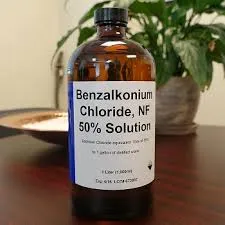poly aluminum chloride pac
Understanding Poly Aluminum Chloride (PAC) An Essential Water Treatment Chemical
Poly Aluminum Chloride, commonly known as PAC, is a crucial coagulant widely used in water treatment processes. Its unique properties make it highly effective for removing impurities from water, and it has become an integral part of both municipal and industrial water purification systems.
What is Poly Aluminum Chloride?
PAC is a type of aluminum salt that exhibits a higher adsorption capability than traditional coagulants such as alum (aluminum sulfate). It is a polymeric form of aluminum hydroxide chloride, produced through the controlled hydrolysis of aluminum chloride in an alkaline environment. PAC can be found in different forms, including liquid and powder, and its composition can vary depending on the manufacturing process and target application.
Benefits of PAC in Water Treatment
One of the primary advantages of PAC is its efficiency in coagulating and flocculating particles in water. When added to water, PAC works by neutralizing the electric charges of suspended particles, allowing them to gather together and form larger clumps known as flocs. These flocs can then be easily removed through sedimentation or filtration, resulting in clearer and cleaner water.
The use of PAC has several benefits over traditional coagulants
1. Lower Dosage Requirements PAC typically requires a lower dosage compared to alum, which can lead to cost savings and reduced chemical handling.
2. Better Performance at Varying pH Levels PAC operates effectively across a wider range of pH levels, making it versatile for different water sources and conditions.
poly aluminum chloride pac

4. Enhanced Treatment of Turbid Water PAC is particularly valuable in treating highly turbid water, as it is more effective at removing suspended solids and colloidal particles.
5. Improved Water Quality The use of PAC not only improves the physical clarity of water but also enhances its chemical and biological quality, leading to better overall treatment outcomes.
Applications of PAC
PAC is utilized in various sectors due to its effectiveness in water treatment. Municipal water treatment plants rely on PAC for drinking water purification, ensuring compliance with health standards and improving the safety of the water supply. In the industrial sector, PAC is used for wastewater treatment in industries such as paper manufacturing, textiles, and food processing, effectively removing contaminants from effluent before it is discharged.
Additionally, PAC finds applications in the treatment of stormwater, industrial process water, and even in the production of certain types of beverages, where clarity and purity are of utmost importance.
Safety and Handling
While PAC is generally regarded as safe for use in water treatment, proper handling and safety precautions should always be observed. Operators should wear appropriate personal protective equipment (PPE), including gloves and goggles, to prevent skin and eye contact. Moreover, it is essential to store PAC in cool, dry places to maintain its stability and effectiveness.
Future Perspectives
As global water scarcity and pollution issues continue to escalate, the demand for effective and sustainable water treatment solutions like PAC is expected to grow. Ongoing research into optimizing PAC formulations and exploring novel applications may further enhance its benefits.
In conclusion, Poly Aluminum Chloride is a vital chemical in the arsenal of water treatment technologies. Its superior coagulation properties, lower environmental footprint, and versatility make it a preferred choice for enhancing water quality across various applications. With continued innovation and research, PAC will likely play an even more significant role in addressing the world's water challenges in the years to come.
-
Water Treatment with Flocculant Water TreatmentNewsJun.12,2025
-
Polymaleic AnhydrideNewsJun.12,2025
-
Polyaspartic AcidNewsJun.12,2025
-
Enhance Industrial Processes with IsothiazolinonesNewsJun.12,2025
-
Enhance Industrial Processes with PBTCA SolutionsNewsJun.12,2025
-
Dodecyldimethylbenzylammonium Chloride SolutionsNewsJun.12,2025





